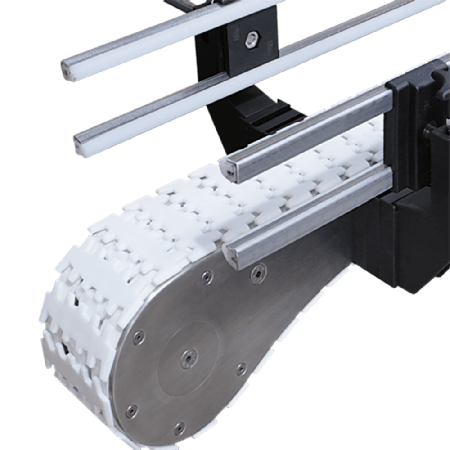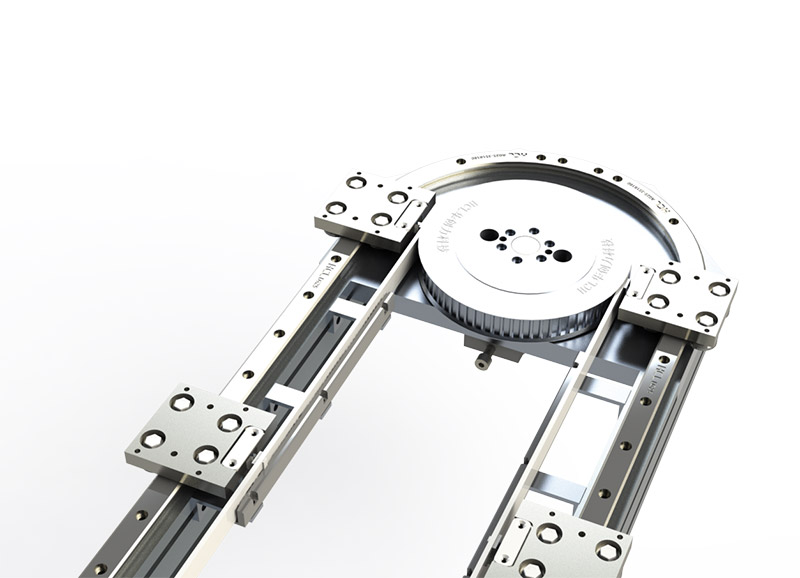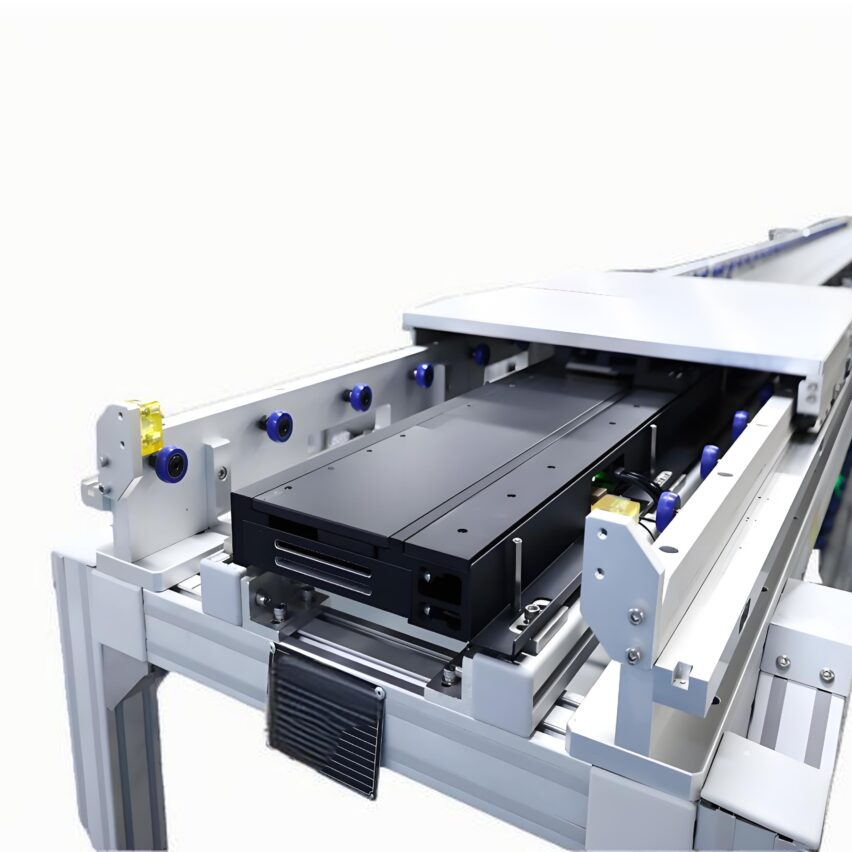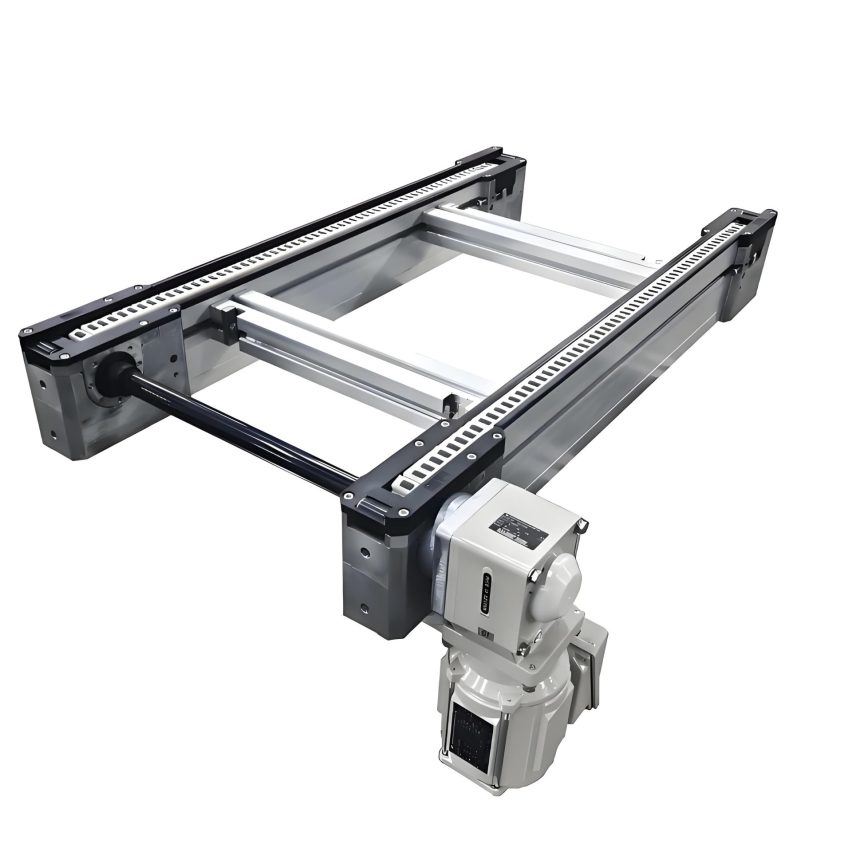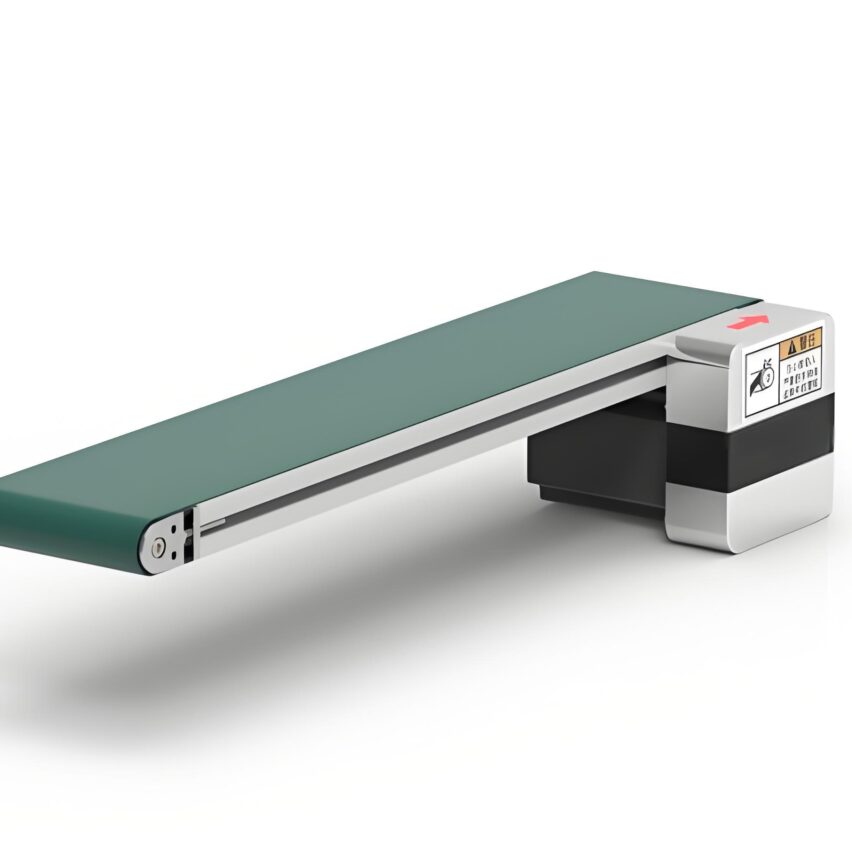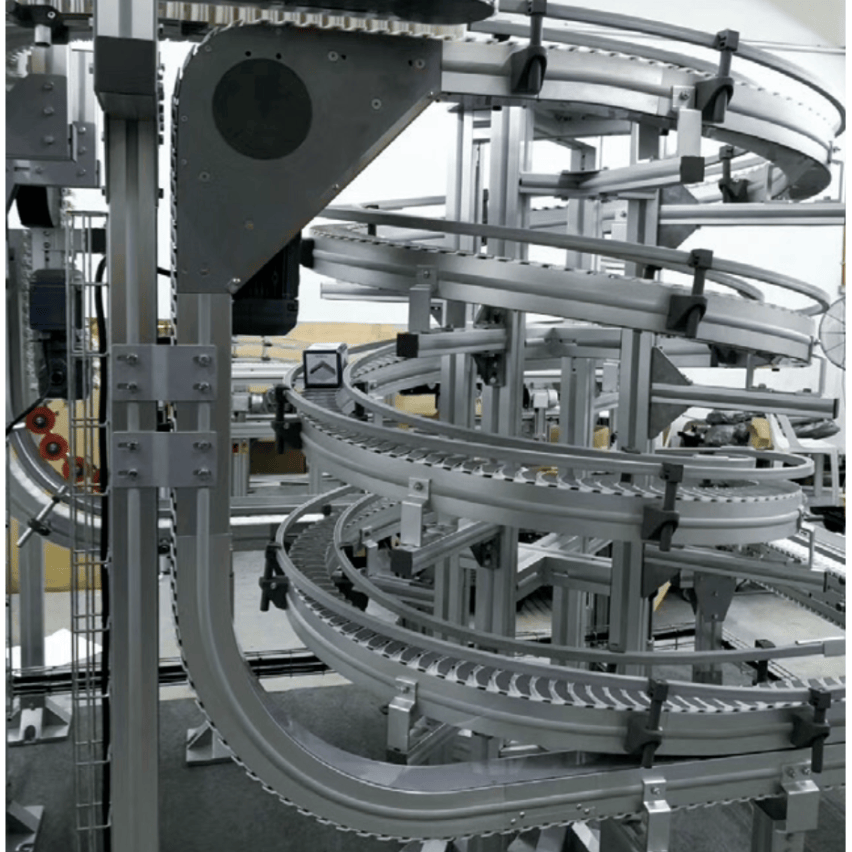in high-end manufacturing areas such as electronic chips and biomedicine.无尘车间Speed Chain Conveyor Linehonestlyzero particulate pollutiontogether withTriple speed driveThe dual characteristics of the system make it a key technology to break through the bottleneck of clean production. This conveying system, which combines the principle of mechanical acceleration with cleanroom standards, not only controls the release of particles to within ISO Class 5, but also provides a cleaner environment through the use ofClosed-loop dust suppression designAchieve a dynamic balance between efficiency and cleanliness. In this article, we will analyse its technical core and the logic of landing.
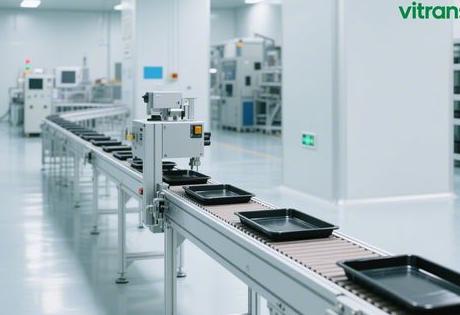
I. The Physical Code of Clean Growth Rate: Reconstruction of Multiplier Chain in Dust-Free Environment
The friction of the rollers of traditional speed chains releases metal particles, whereas the special speed chains for clean rooms are designed to release metal particles by means ofTriple dust suppression structureAchieving a breakthrough:
- Engineering Plastic Roller: Carbon fibre reinforced polyether ether ketone (PEEK) material, coefficient of friction reduced to 0.05, particulate release <3.5 particles/m3 (≥0.3μm)
- Vacuum adsorption guides: Aluminium alloy guide rail embedded negative pressure chamber, real-time extraction of friction-generated fine dust
- Ion wind screen isolation: ±50V static electricity elimination wind screen is set above the conveying line to block the environment from falling dust.
Optimisation of the velocity stacking formula::
In a dust-free environment, the theoretical 3 times the speed of the roller diameter ratio (D/d = 2) due to low-friction lubrication can actually reach 2.92 times (measured value), 7% than the industrial environment.
Industry ObservationsPEEK rollers have a life expectancy of 28,000 hours in a Class 10,000 cleanroom, far exceeding the 15,000 hours of steel rollers, as measured by a chip packaging plant.Non-metallic materials are irreplaceable in clean scenarios.
II. Dust-free adaptation design: systematic innovation from structure to material
Antistatic Workplace Panel System
- substrates: Carbon nanotube-modified PVC sheet with surface resistance 10⁶~10⁹Ω
- Electrode design: A copper alloy conductive grid embedded in the bottom of the tooling plate, forming a closed loop with the guide conductive wheels.
- power managementContact power supply voltage ≤ 24V DC, eliminating the risk of electrical sparks
Clean blocking mechanism
- airtight cylinderPiston rod with Viton seal, leakage rate <0.01% vol/min.
- oil-free lubricationAdoption of self-lubricating graphite copper bushing to avoid lubricant volatilisation and contamination
- buffer dust reduction: Polyurethane vibration absorbing head impact noise ≤ 45dB, particle disturbance reduction 80%
Modular quick release construction
plaintextmake a copy of| Components | Clean Design Essentials | Cleaning Time Reduction Ratio | | ---------------|----------------------------|---------------| | Chain | Tool-less segmented disassembly | 67% | | Guide Rails | Snap-In Connections | 52% | | Drive Module | Plug-In Electrical Connection | 73% |
III. Intelligent Dust Suppression Control: Data-Driven Cleanliness Guarantee
Particle Dynamic Monitoring System
- Laser particle counters: 2 monitoring points per metre of conveyor line, real-time feedback ≥ 0.3μm particle counts
- Adaptive dust removal strategy::
- Particle concentration <1000/m³: activate the ion wind screen
- Particle concentration ≥1000/m³: activation guide vacuum adsorption + wind screen
- Closed-loop control response: Pollution event processing delay <1.5 seconds
Energy consumption optimisation model
plaintextmake a copy ofCleanliness class Mode of operation Energy consumption factor ISO 6 Basic air curtain 1.0x ISO 5 Vacuum adsorption + air curtain 1.8x ISO 4 Full system reinforcement 2.5xreal time data: A vaccine filling line adopts a hierarchical control strategy, with a daily average energy saving of 39% and an annual electricity saving of over 170,000 RMB.

Fourth, the application of severe scenes: electronics, medical, new energy landing practice
Semiconductor wafer transport
- Wafer carrier positioning accuracy ±0.05mm
- Nitrogen ambient oxygen content ≤0.1ppm
- Anti-static ability: static dissipation time <0.3 seconds
Sterile syringe assembly
- 304 stainless steel body + UV sterilisation module
- Biofilm residue detection: ≤50 RLU by ATP swabbing
- GMP certification: meets FDA 21 CFR Part 11 data integrity requirements
Lithium diaphragm winding
- Tension control accuracy ±2N
- Surface roughness of copper alloy parts Ra ≤ 0.4μm (to prevent metal ion precipitation)
- Humidity fluctuation control: ΔRH≤3%
V. Operation of prohibited areas and breakthrough direction
Rigid Taboo Warning
- ❌ Ambient humidity >70%: PEEK roller absorbs moisture and expands resulting in speed deviation >5%
- ❌ Ethanol cleaning: solvent penetration triggers peeling of conductive adhesive layer
- ❌ Load eccentricity > 3 cm: triggers roller deflection to release particles
Frontiers of Materials Innovation
- Nanoceramic Coating: 316L stainless steel substrate coated with Al₂O₃ ceramics, wear resistance index increased by 200%
- Graphene Conductive Adhesive: Surface resistance stability improved to ±5% (±15% for conventional materials)
- Superhydrophobic rail coatingContact angle >150°, eliminating residual droplet contamination
The next decade: from clean transport to cellular production
As the precision requirements of biomanufacturing increase, the dust-free multiplier chain will move to theBiocompatible SystemsEvolution:
- Live cell delivery vehicle: Medical grade PEEK roller surface grafted with RGD peptide chains to support stem cell adherent transport.
- Microbiological inhibition coating: Silver ion doped silicon nitride coating, sterilisation rate >99.99%
- Quantum Dot Pollution Monitoring: Chain links embedded in fluorescent sensors for real-time identification of bacterial ATP concentration
Laboratory data from a gene sequencing company shows that the biocompatible multiplier chain has increased the cell activity retention rate from 86% to 98.2%, which signifies that the life science industry is about to usher in the era of "cellular-level programmable production line".
Core Q&A about Cleanroom Multiplier Chains
Q1: How to solve the particle friction when the conductive wheel contacts the work plate?
A1: AdoptionGold-nickel alloy plating technology--Electroplated 2 μm nickel layer + 0.1 μm gold layer on copper alloy substrate, the friction coefficient is reduced to 0.08, while the ductility of the gold layer absorbs micro-vibrations and the particle generation is reduced by 92%.Q2:How to adapt the vertical circulation layout to the low floor height clean room?
A2: Innovative designFlatten the return channel::
- Lower rail height compression to 68mm (conventional 85mm)
- The jacking mechanism was converted to magnetic levitation drive and the thickness was reduced from 120mm to 45mm.
- The overall floor height requirement has been reduced from 2.2m to 1.6m, which is suitable for the renovation of old factories.
Q3:How can RFID identification avoid electromagnetic interference clean environment?
A3: AdoptionElectromagnetic shielding coupling programme::
- Read/write power controlled to less than 10mW (industrial grade typically 100mW)
- Label antenna with built-in mu-grade metal mesh shielding
- Encrypted packet transmission, BER <10-⁹
Measurements have shown that this solution makes the intensity of electromagnetic pollution only 0.8V/m, much lower than the limit value of 3V/m in the clean room.




